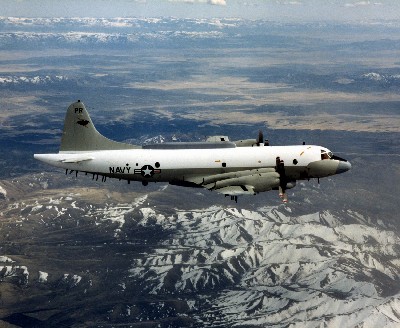
It shouldn't surprise us that countries routinely keep an eye on what other countries are doing. Normally, these surveillance activities go unnoticed by the general public -- by definition, reconnaissance missions are not highly publicized.

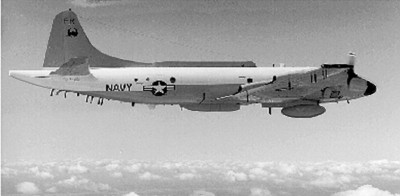
The EP-3E is equipped with some of the most advanced surveillance equipment in the world. Most of the plane�s systems are classified, but there is some information known about the surveillance equipment.
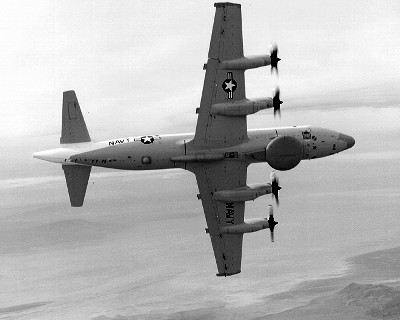
A radome is attached to the spy plane's underbelly.
The plane is equipped with sensors, receivers and dish antennas to capture electronic signals. There are two compartments, one on the top and one on the bottom of the plane, that house antennas. The EP-3E is also equipped with an AN/APX-134 radar antenna and a radome, which are located in a specially-modified cargo bay, according to GlobalSecurity.org. The radome is a dome-like shell underneath the plane. It houses the radar antenna and is transparent to radio-frequency radiation.
The Plane and Crew
In the 1990s, the Navy had 12 Lockheed-Martin P-3Cs converted into EP-3E ARIES II aircraft. These new planes were designed to replace the aging ARIES I aircraft, which were built in the late 1960s and early 1970s. Modifications to the EP-3E began in 1996, and the last aircraft was delivered in 1997. EP-3Es have been used for reconnaissance in support of several military operations, including support of NATO forces in Bosnia and joint forces in Korea.
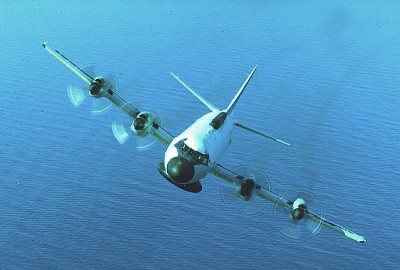
| Wingspan | 99 feet 6 inches (30.36 meters) |
| Height | 34 feet 3 inches (10.42 meters) |
| Length | 105 feet 11 inches (32.28 meters) |
| Engines | four Allison T56-A14 turboprop engines |
| Crew | 24 |
| Range | 3,000 miles (4828 km) or 12 hours |
| Max. Speed | 350 knots (402 mph / 648 kph) |
The unarmed plane is operated by a 24-person crew, which includes three pilots, one navigator, three tactical evaluators, one flight engineer, equipment operators, technicians and mechanics. The plane has 19 crew stations and a total seating capacity of 24.
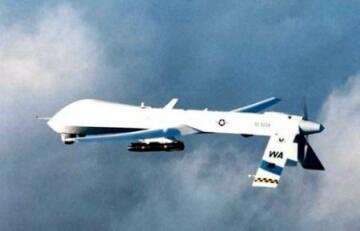
| Name | RQ-1 Predator |
| Type | tactical surveillance and tracking UAV |
| Manufacturer | General Atomics |
| Weight, Empty | 950 lb ( kg) |
| Weight, Max Takeoff | 2,250 lb (1021 kg) |
| Length | 27.0 ft (8.2m) |
| Height | 6.9 ft (2.1m) |
| Span | 48.7 ft (14.8m) |
| Powerplant | Rotax 912 four-cylinder engine 81hp |
| Speed, cruise | 70-120 knots (84-140 mph/135-225 kmh) |
| Range | 400 nm (454 miles/731 km) |
| Endurance | 16 hours on station |
| Ceiling | 25,000 ft (7620m) |
| Launch | runway, wheeled |
| Recovery | runway, wheeled |
| Sensors | Simultaneous EO/IR (0.5 ft. resolution) and SAR (1.0 ft resolution) capable; SAR only via Ku-Band or LOS |
| Payload | 450 lb (204 kg) |
| Armament | none |
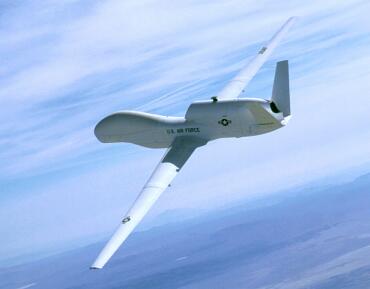
| Name | RQ-4 Global Hawk |
| Type | High-altitude, high endurance long range UAV |
| Manufacturer | Teledyne/Ryan |
| Weight, Empty | 8940 lb (4,055 kg) |
| Weight, Max Takeoff | 25,600 lb (11,612 kg) |
| Length | 44.3 ft (13.5m) |
| Height | 15.1 ft (4.6m) |
| Span | 116.1 ft (35.4m) |
| Powerplant | 1 x Allison Rolls Royce AE3007H turbofan at 7,050 lb thrust |
| Speed, cruise | 340 knots (391 mph/630 kmh) |
| Range | 13,500 nm (15,525 miles/25,000 km) |
| Endurance | 42 hours |
| Ceiling | 65,000 ft (19,812m) |
| Launch | runway, wheeled |
| Recovery | runway, wheeled |
| Sensors | Simultaneous EO/IR (1.0 ft search, 0.5 ft. spot) and SAR (3.0 ft search, 1.0 ft spot) capable; SAR only via Ku-Band or LOS; capable of 40,000 sqnm or 1,900 spot images per 24 hr mission with 20M CEP accuracy |
| Payload | 2,000 lb (907 kg) |
| Armament | none |
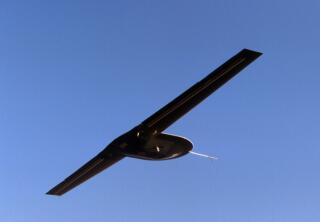
| Name | Darkstar |
| Type | High-altitude, low-observable UAV optimized for reconnaissance in highly defended areas |
| Manufacturer | Lockheed Martin/Boeing |
| Weight, Empty | 4,360 lb (1978 kg) |
| Weight, Max Gross | 8,600 lb (3900 kg) |
| Length | 15 ft (4.57 m) |
| Height | 3.5 ft (1.06 m) |
| Span | 69 ft (21.03 m) |
| Powerplant | 1 x Williams FJ-44-1A turbofan at 1,900 lb thrust |
| Speed, cruise | 250 knots (288 mph/463 kmh) |
| Range | >500 nm (575 miles/926 km) |
| Endurance | >8 hours |
| Ceiling | >45,000 ft (13,716 m) |
| Launch | runway, wheeled |
| Recovery | runway, wheeled |
| Sensors | EO (0.5 ft. spot) or SAR (3.0 ft search, 1.0 ft spot) capable; capable of 14,000 sqnm or 620 spot images per 8 hr mission with 20M CEP accuracy |
| Payload | 1,000 lb (454 kg) |
| Armament | none |
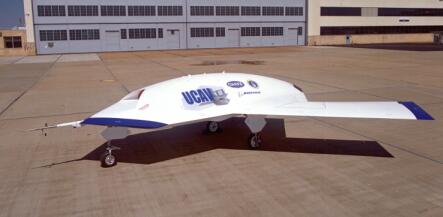
| Name | X-45A Unmanned Combat Aerial Vehicle (UCAV) |
| Type | experimental unmanned combat aerial vehicle |
| Manufacturer | Boeing |
| Weight, Empty | 8,000 lb (3629 kg) |
| Weight, Max Takeoff | ? lb (? kg) |
| Length | 26.3 ft (8.02 m) |
| Height | 3.7 ft (1.13 m) |
| Span | 33.8 ft (10.30 m) |
| Powerplant | Honeywell F124 turbofan |
| Speed, cruise | - |
| Range | - |
| Endurance | - |
| Ceiling | - |
| Launch | runway, wheeled |
| Recovery | runway, wheeled |
| Sensors | - |
| Payload | 3,000 lb (1361 kg) |
| Armament | missiles, smart bombs |
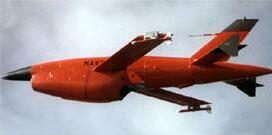 On February 2, 1962, a $1.1 million contract was issued to Ryan Aeronautical to modify four Firebee target drones into reconnaissance drone prototypes. Specifications included a 1,200 mile range, a cruising altitude over 55,000 ft and a photo-resolution of two-feet. The first 147A drone was a standard Firebee with a timer-programmer and an MA-1 gyro compass as a simple guidance system. The other three 147As were 'stretched' by 35" with a fuselage plug allowing an additional 68 gallons of fuel to be carried. The nose was modified to carry a camera and house the optics from the U-2.
On February 2, 1962, a $1.1 million contract was issued to Ryan Aeronautical to modify four Firebee target drones into reconnaissance drone prototypes. Specifications included a 1,200 mile range, a cruising altitude over 55,000 ft and a photo-resolution of two-feet. The first 147A drone was a standard Firebee with a timer-programmer and an MA-1 gyro compass as a simple guidance system. The other three 147As were 'stretched' by 35" with a fuselage plug allowing an additional 68 gallons of fuel to be carried. The nose was modified to carry a camera and house the optics from the U-2. The first drone (147A-1) was used to test the navigation systems while the second was used in evaluating the camera and other modifications. In just 7 flights (3 with the 147A-1 and four with the 147A-2) Fire Fly proved it could follow a desired track, had adequate range and better than expected altitude and photo resolution. With this the remaining two drones along with their DC-130 launch aircraft were put on 72-hour alert at Holloman Air Force base, New Mexico in a limited operational capacity.
Following the loss of a U-2 during the Cuban missile crisis the group at Holloman was told to get ready to conduct a two-drone mission over Cuba on short notice. This mission was canceled at the last minute. Unmanned aerial vehicles would end up being used over Vietnam and Red China in huge numbers.
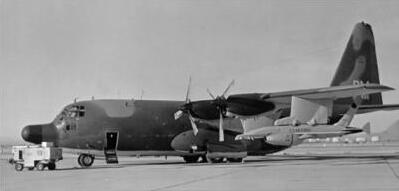
Belfry Express
Navy program 147SK 29 ft fuselage 15 ft span.
'COMPASS BIN' AQM-34L (FIREBEE II)
'COMPASS COOKIE'
In September 1972 a final series of four 147H missions were flown. The cameras were replaced by ELINT equipment to gain radar and fuse data on the SA-2.
Litterbug
28 missions flown by 147NC drones between July and December 1972 to dispense propaganda leaflets over North Vietnam.
United Effort
'COMPASS DAWN'
147TE high altitude real time COMINT UAV.
Model 154 Firefly AQM-91 'COMPASS ARROW'
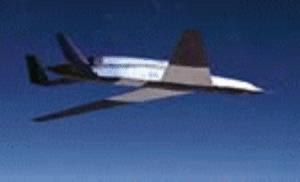
28 made. 'Red book' 'Blue Book' Model 150. In June 1966 Ryan Aeronautical got the development contract.
Wingspan: 47 ft 8 in
Length: 34 ft 2 in
Empty Weight: 3,800 lb.
Max loaded Weight: 5,400 lb.
Maximum Speed: 505 mph / 440 kt
Service Ceiling: > 78,000 ft
Range: 4,370 mi / 3,800 nm
Camera: KA-80A
Navigation: precision doppler-inertial system with 5 different operating modes.
Propulsion: 4,000 lb. (1815 kg) thrust YJ-97-GE-3 turbojet
Launch Altitude/Vehicle: 15,000-25,000 ft from under the wing of a DC-130E director aircraft.
The engine exhaust is mixed with cool air to reduce its infrared signature. The Model 154 was also able to carry electronic countermeasures to further improve its survivability. The KA-80A camera system could take a stream of pictures with a swath of 43 miles over a 1,720 mile stretch of ground. Optical resolution was 1 foot directly under flight path. In the end though the Model 154 never was allowed to fly the mission for which it was designed.
YQM-96A/YQM-94A 'COMPASS COPE'
Ryan updated the Model 154 design for a more advanced variant, designated the YQM-96A Compass Cope, for a USAF requirement. Two were built before the program died in the late 1970s. They resembled the Model 154, but had straighter wings. One set a record in 1974 for an endurance flight lasting 28 hours and 11 minutes. Boeing designed a similar UAV, the YQM-94A, for the Compass Cope requirement, and also built two prototypes before the program was cancelled.
D-21 'TAGBOARD'
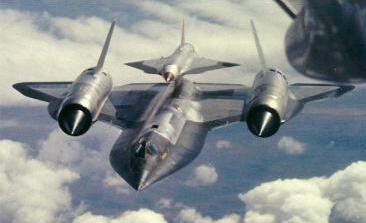
Initially designated the 'Q-12'. On March 20, 1963 the CIA issued a contract to begin full-scale development. Funding and operational control was split between the CIA and the Air Force. By October 1963 the drone design had been finalized. It was renamed the 'D-21'. The A-12 launch aircraft was similarly renamed, becoming the 'M-21' (the M stood for "mother" while the D was for "daughter").
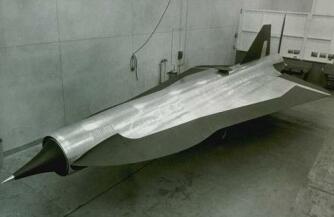
D-21A
Length: 42.8 ft
Wingspan: 19.02 ft
Height: 6 ft loaded weight: 11,200 lb.
Camera: Hycon HR-335
Propulsion: Marquardt RJ43-MA-11 ramjet burning JP-7 fuel
Range: > 3,000 nm
Altitude: 80,000 - 95,000 ft
Max. speed: Mach 3.35
Cruising speed: Mach 3.25
D-21/M-21 Launch Program
The first captive flight test came on December 22, 1964 when pilot William Park took off from Groom Lake around two in the afternoon. Despite the added weight and drag of the D-21 Park found the D-21/M-21's flight characteristics to be essentially the same as the A-12. During a captive flight test in April 1965 control surface flutter tore off both elevons from a D-21. A redesign involving balance weights and control surface locks solved the problem and by May the D-21/M-21 combination had flown at Mach 2.6.
This rapid progress would slow substantially during the summer and fall of 1965 due to a variety of problems. Poor transonic acceleration, particularly on hot days. The weight and drag of the D-21 cut into the speed and range of the A-12. Despite having more powerful engines installed in the M-21s as well as a new inlet control system the problems persisted. Another issue was the separation of the intake and exhaust covers from the D-21. Fragments could enter the ramjet and possibly strike the M-21. This is in fact what happened on the first and only attempt to separate the covers in flight, the pieces tore up the chines of 503, causing major damage. It was decided to do away with the covers all together, ironically this solved the drag problem as well since the ramjet could now act as a third engine for the M-21 during acceleration to launch speed. It would kick in at Mach 1.24. Just before launch fuel transferred from the M-21 would top off the D-21, replacing what had been used up during the run up to the launch point.